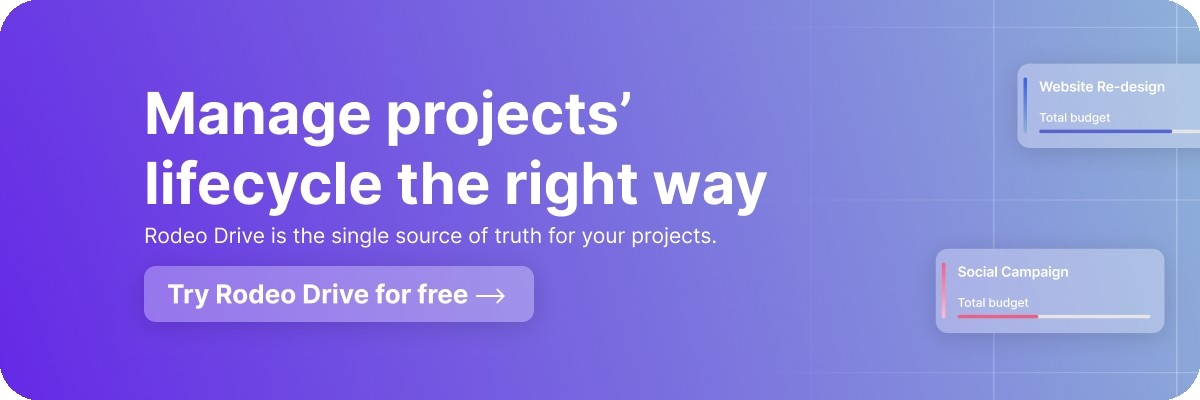A Guide to the 5 Phases of Project Management
Having a clear roadmap and structured approach is essential for success on all projects. Without structure, teams are likely to miss deadlines or overrun project budgets.
This guide will walk you through the five key phases of project management, providing a comprehensive understanding of each stage and its significance.
Get project management right from the start. Let's explore how to manage projects and achieve desired outcomes effectively.
What is a project lifecycle?
To ensure a systematic approach, projects typically go through five distinct phases forming the project life cycle. These phases guide the project team from initiation to completion.
By understanding and effectively navigating through these phases, project managers can enhance their ability to meet project objectives.
The specific stages of a project lifecycle differ across industries but generally include initiation, planning, execution, monitoring and controlling, and closure. Each phase has objectives, deliverables, and tasks that must be accomplished to move the project forward.
The project management life cycle is vital in bringing cohesion to projects and fostering collaboration among team members, particularly in cases involving multiple departments. By following a structured lifecycle, project managers can ensure that all stakeholders are on the same page and can work together seamlessly.
Learn more common project management terms with our glossary.
The 5 project phases
According to the Project Management Institute, only 46% of organizations make project management a priority. When you find yourself in a project manager role, selecting the right framework for a project can be a challenging task if your company lacks the best practices.
Let’s peel back the layers and look at the five fundamental project phases crucial to effectively managing projects.
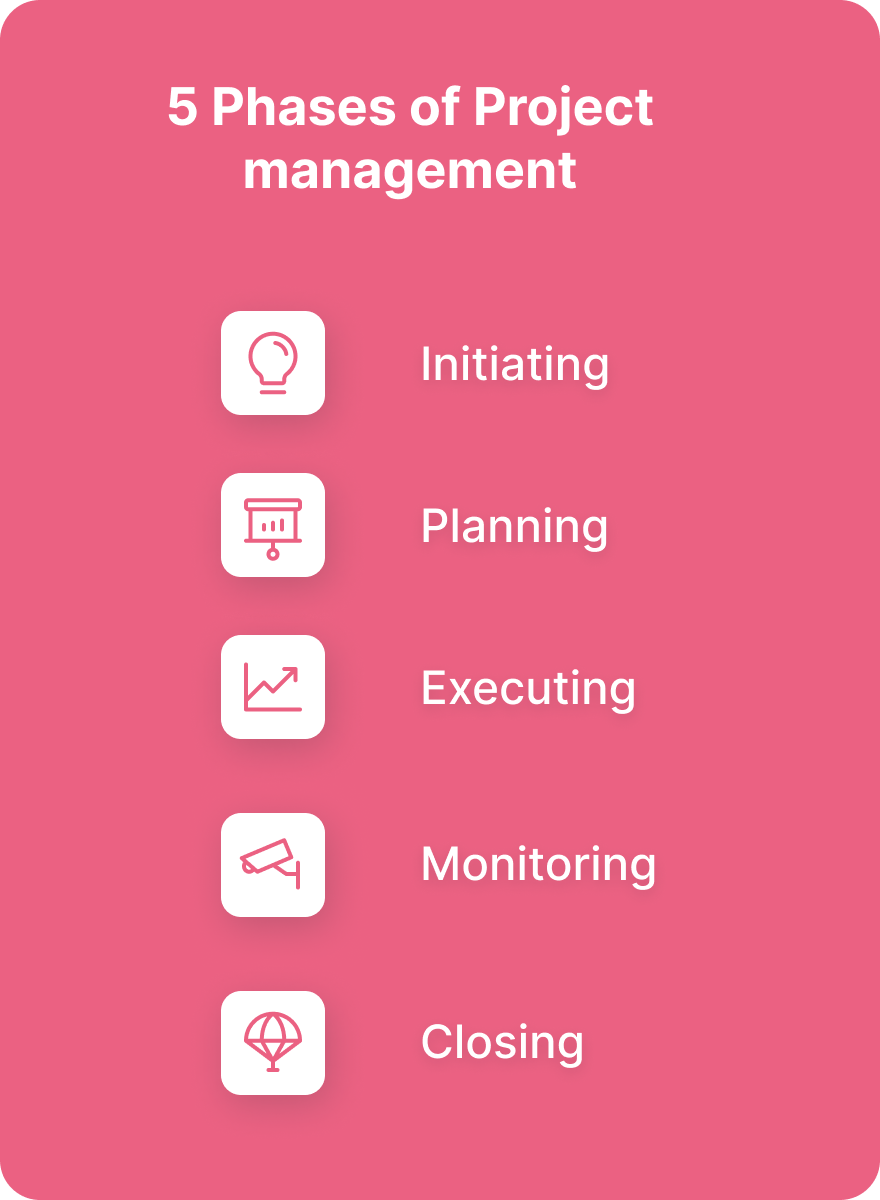
1. Initiating
During the first step, the project initiation phase, project managers establish the foundation by conducting thorough research and gaining a comprehensive understanding of the project's timeline, budget, and expected deliverables set by stakeholders.
Project research
This initial but crucial step involves a lot of homework, from gathering necessary information, and assessing feasibility, to finally defining the project's scope and objectives.
Project research encompasses a number of approaches, depending on whether teams are in-house or working with a range of clients. Reviewing previous projects can help to determine if any past frameworks or methodologies can be applied to the new project.
This step requires some reading and diving into reports. Project managers should carefully consider which project management methodology aligns best with their objectives. Overall, this step aims to establish a project vision and lay a strong foundation for organizing the project effectively.
Defining the project scope
Prior to project execution, it is crucial to clearly understand what needs to be achieved — commonly referred to as the project scope.
The project scope delineates the parameters and defines what is included (and excluded) in the objectives. To ensure consistent understanding among all stakeholders, it’s considered best practice to document this information in a project statement of work.
Defining the project scope early in the process is essential to avoid scope creep, which refers to the uncontrolled expansion of project boundaries. By clarifying the scope upfront, you can mitigate the risk of project scope getting out of control and ensure focused and efficient project execution.
Crafting an accurate project budget
A meticulously crafted project budget proposal serves multiple purposes, including securing financing and setting definitive goals and timelines. This document is crucial in maintaining project alignment, ensuring adherence to predetermined schedules, and staying within budget constraints.
By using the outlined project requirements and deliverables, teams can calculate the expected expenses which helps better track project costs. This process solidifies everyone’s understanding of the project's financial aspects and ensures the projected costs align with the planned objectives.
Developing a project budget can be an uphill task, but fortunately, project management tools such as Rodeo Drive can streamline the process and enhance productivity.
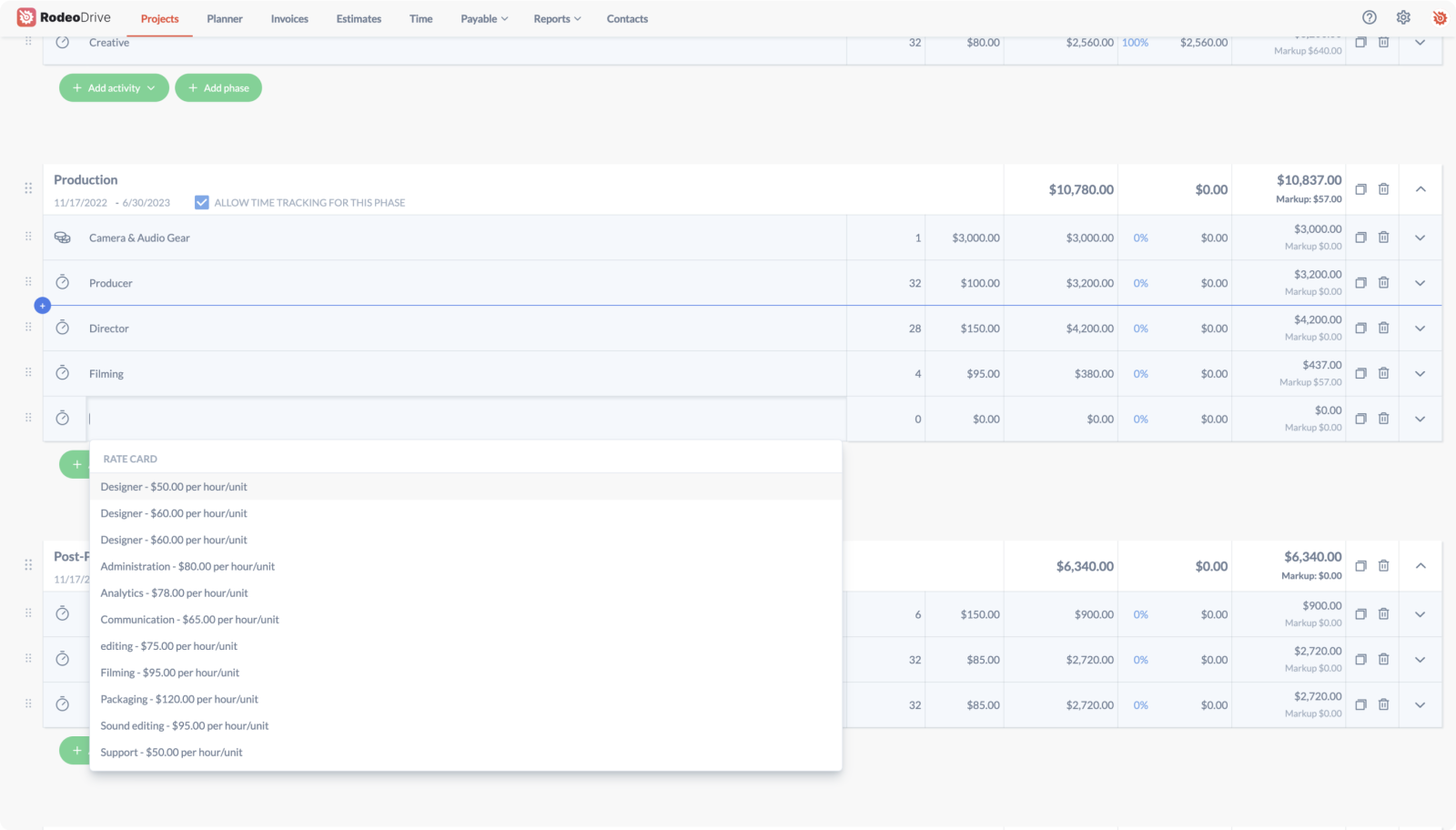
One beneficial budgeting feature of Rodeo Drive is the ability to create phase-based budgets. By breaking down the budget into distinct phases, you can allocate resources and track expenses more effectively.
Each phase can be further divided into activities and tasks, providing a granular view of the project's financial requirements. This approach not only helps in gaining stakeholder buy-in but also ensures that projects are financially viable and profitable.
After completing the construction of your project budget within Rodeo Drive, you can conveniently submit it for approval directly from the platform as a project estimate — which can be fully customized to meet specific requirements. You also have the flexibility to include your preferred terms and conditions, incorporate any applicable discounts, and provide an introductory summary as needed.
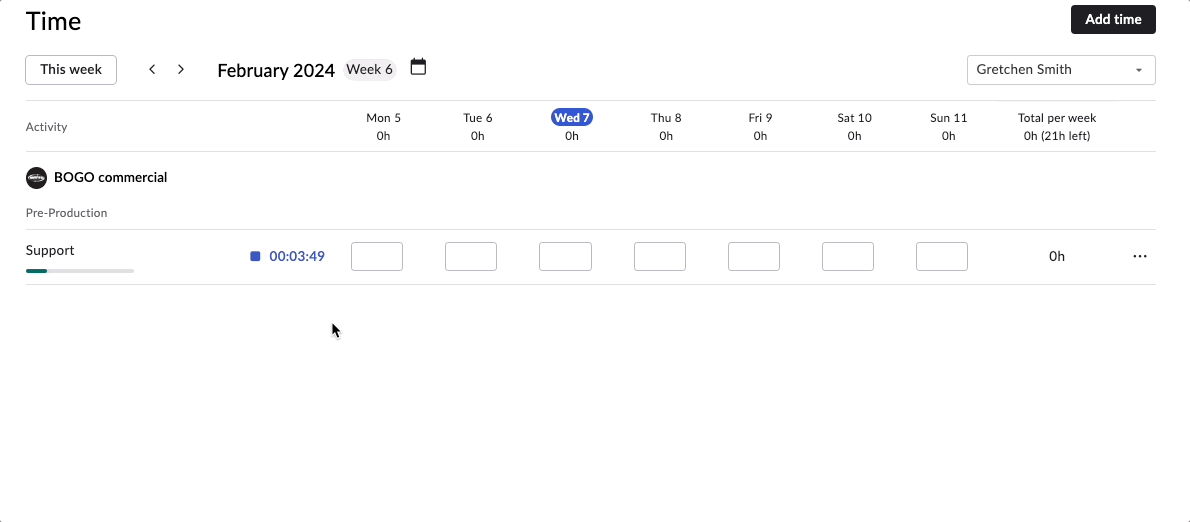
The best part of using Rodeo Drive for project budgeting is that every tracked time activity is linked to its specific budget activity, automatically updating the budget in real time. For example, as team members record their time in Rodeo Drive, the budget is automatically adjusted, reflecting the actual hours spent on each activity.
This dynamic connection between time entries and budget activities enables effortless tracking of project spending without additional manual effort.
Building a feasible timeline
Now that there’s an established scope and budget, the question is: when?
While regular management operates continuously, project management is confined to a specific timeline. However, there is a correlation between the two as project managers play a crucial role in providing leadership while keeping a close eye on the project’s progress.
A straightforward approach to building a project timeline is by estimating the time required to complete each task and effectively managing the team's weekly workload based on those estimations.
Utilizing project management software with time-tracking features streamlines this process, allowing users to monitor time spent on tasks, compare it with their estimates, and make informed decisions regarding the project schedule. This iterative approach helps to maintain a reliable and up-to-date project timeline throughout the project's lifecycle.
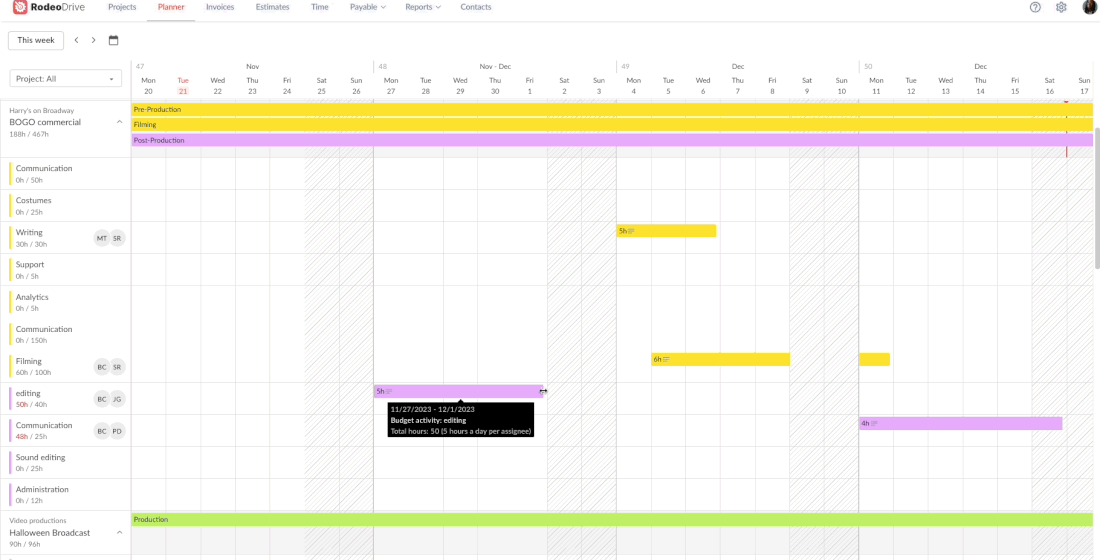
Pro tip: Documenting all these project details is crucial. A project plan or project charter is a comprehensive and detailed document encompassing the scope, objectives, timeline, and resource requirements necessary for the successful execution of a project.
It acts as a roadmap, offering clear instructions for each project phase, and ensuring alignment and understanding among all team members. Our project charter template can help you get started.
2. Planning
The project planning phase is the pivotal stage where project managers make critical decisions regarding how their project team will accomplish the work. Whether companies adopt Agile or other methods, meticulous planning will result in making deadlines.
When allocating resources and assigning tasks, consider the experience level and skill sets of each team member. Evaluating their expertise and past performance on similar projects can help determine the most suitable roles and responsibilities.
Related: 11 Capacity Planning Tools to Maximize Your Team’s Efficiency
Managing and tracking the work of individual team members can be challenging. To address this, Rodeo Drive offers a planning feature that enables you to assign tasks based on team capacity. With Rodeo Drive's planning feature, you can effectively allocate tasks and map out specific days for their completion.

Rodeo Drive's timeline view task planner allows you to consider team availability while assigning tasks, ensuring that task assignees can take on additional work. This way, no one is left with too many tasks on their plate at one time.
3. Execution
Here’s where the work gets done. The project execution phase marks the active implementation of the project, where the project team transitions from planning to actual work.
Project managers assume the role of managers, overseeing the progress and ensuring the team's efforts align with the project plan. During this phase, team members dedicate their efforts to achieving critical milestones and delivering high-quality outputs.
Collaboration, coordination, and effective task management become paramount as the team works towards meeting project objectives. The execution phase is a crucial stage where the project vision starts to materialize, and proactive project management ensures smooth progress toward successful project completion.
Tip: Check out our complete guide to level of effort for better insights into task and capacity planning.
4. Monitoring/controlling
This phase emphasizes the importance of proactive problem-solving and communication to keep the project on track toward its desired outcomes. Closely monitoring the project's progress ensures alignment with the anticipated timeline.
Project progress monitoring
Businesses waste around 12% of their resources due to ineffective project management practices and a lack of control. Monitoring is an essential step in any project management checklist. Regularly tracking and reporting project progress is essential to identifying the need for adjustments or course corrections if the team's performance does not meet expectations.
Monitoring a project goes beyond overseeing task completion; it also involves managing finances and meeting stakeholder expectations. Project managers are responsible for maintaining financial project control in addition to ensuring stakeholders' requirements and goals are addressed throughout the project lifecycle.
Project management tools offer reporting features that facilitate project monitoring. These reports provide valuable insights into productivity, the number of hours dedicated to a project, and the project's overall completion status.
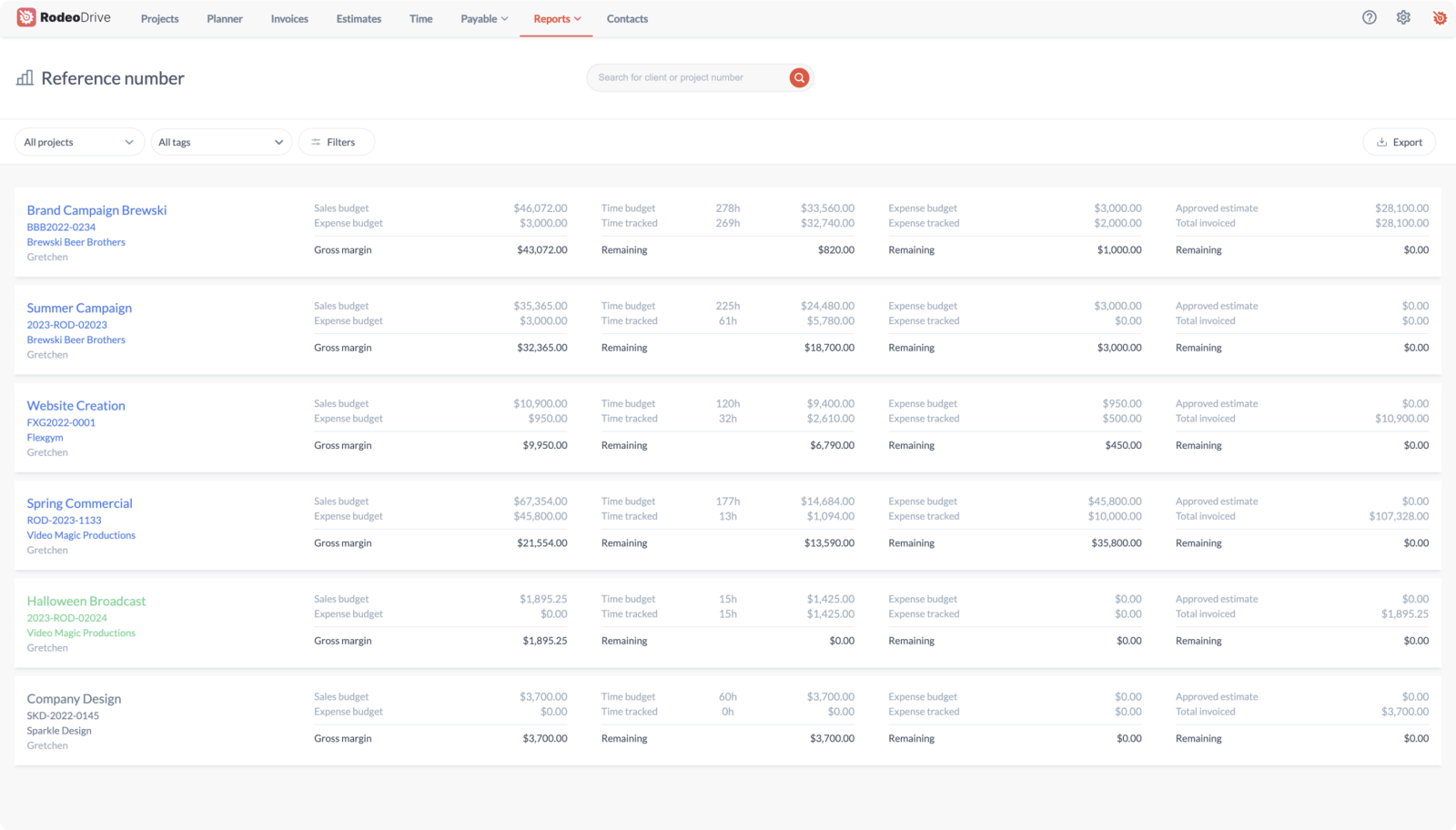
For example, Rodeo Drive compiles all of your project data in the "Reports" tab, giving you immediate access to metrics on your project financials, time registration, and employee productivity. Plus, you can export all of this data as an Excel or CSV file, should you want to create your own reports.
Keeping stakeholders informed
Staying in the loop about project progress is crucial for providing relevant updates to stakeholders.
Project managers need to master project communication management, which includes being up-to-date on the project's status to then relay it to stakeholders, addressing any concerns, and providing accurate project updates.
Related: 6 Ways To Leverage Data with Real-Time Reporting
5. Closing
Finally, in the concluding phase, the project deliverables are presented to the client or stakeholders upon successfully achieving the project objectives. This wrapping-up phase involves showcasing the tangible outcomes, results, or products that have been accomplished throughout the project's lifecycle.
The final presentation of project deliverables provides an opportunity to evaluate and validate the project's success, ensuring that it aligns with the expectations and requirements set — and don’t forget to pop a bottle with the team.
By effectively concluding the project and presenting the deliverables, project managers can establish a sense of closure, celebrate achievements, and gather feedback for future improvements.
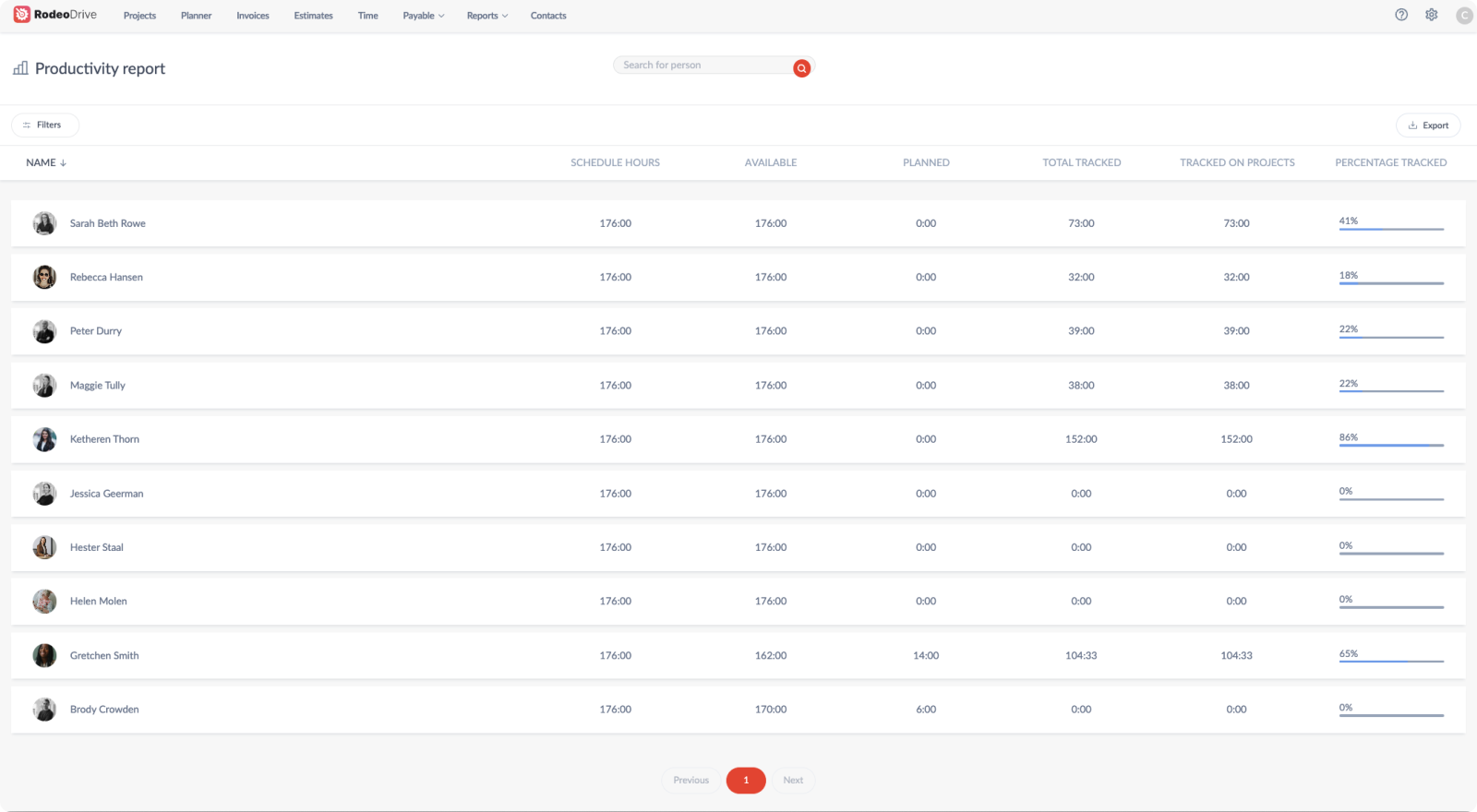
Project reports hold valuable insights that can inform future processes and strategies. One such report is Rodeo Drive's productivity report, which visually represents the workload distribution among team members. This report allows you to identify individuals who contributed significantly to the project and those who may have recorded fewer billable hours.
How to manage and invoice clients’ projects in phases
This continuous project flow can take weeks or months to complete while the bills pile up. To keep the lights on, invoicing based on project phases is essential.
Invoicing components
Before invoicing clients, take the time to carefully consider the essential components of your invoice. At a minimum, the invoice should clearly state the payment terms, total amount, the purpose of the charges, and the payment recipient.

To simplify the invoicing process and save time during project execution, consider utilizing project management invoicing software. It will allow you to create customized invoice templates and store them in a centralized location for easy access.
Rodeo Drive’s invoicing feature, for instance, utilizes the data from your logged hours to automatically generate invoices. This eliminates the need to start from scratch or manually calculate the time spent on projects using a calculator.
Also read: 10 Effective Ways to Handle Outstanding Invoices Like a Pro
Propose a project retainer
Oftentimes, handling outstanding invoices can be a challenge. An alternative to minimize potential surprises (on both ends) is to explore the possibility of transitioning to a retainer contract.
This approach works well for long-term projects and involves bundling together a set of services for a specific period of time at a fixed price — similar to a subscription plan.
For example, a digital agency that provides social media management services could offer different fixed price packages based on number of content created, type of content, and amount of weekly hours. These are often 12-month agreements in which the client receives monthly recurring invoices.
Support your cash flow with a PM tool
Rodeo Drive's invoicing feature aligns with project phases, offering clarity and transparency to your clients regarding the cost breakdown.
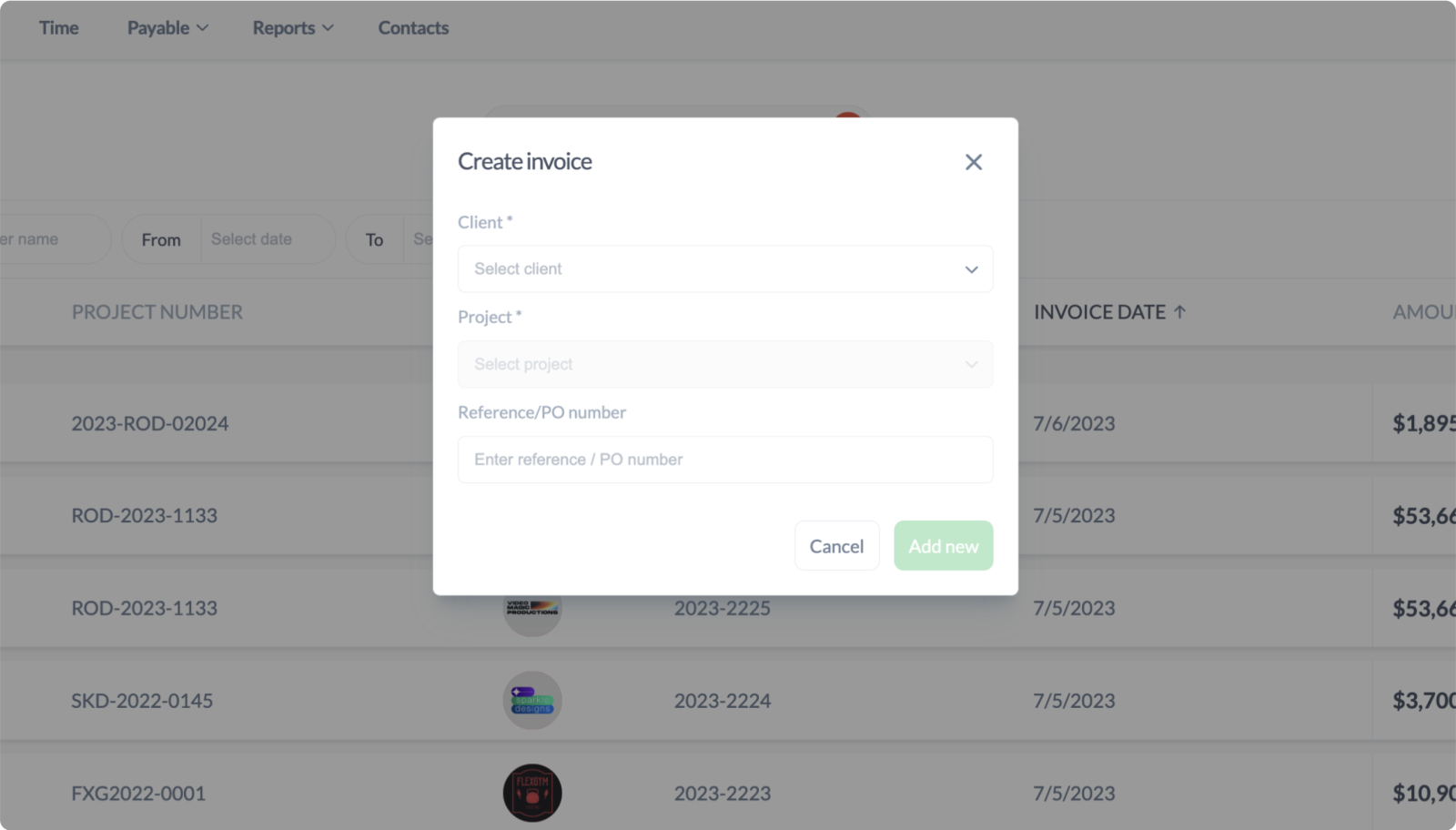
With a range of customization options to personalize invoices in Rodeo Drive, you can incorporate your terms & conditions, notes, branding elements, color scheme, and font choices. The same goes for estimates sent from the platform.
By providing professional, customized invoices, you leave a lasting impression on your clients, reinforcing your commitment to quality and professionalism.
Managing project phases and the entire lifecycle with Rodeo Drive
The 5 phases of the project management lifecycle give project managers structure and some predictability for smoother sailing toward the finish line.
Leveraging a project management software solution can be a valuable resource to save costs and enhance productivity. With Rodeo Drive, you can optimize project management processes, effectively track tasks, collaborate seamlessly, and achieve more in less time.
Whether you're a small team or a growing organization, Rodeo Drive offers a cost-effective solution to empower your team throughout the project lifecycle. Try Rodeo Drive for free today.





